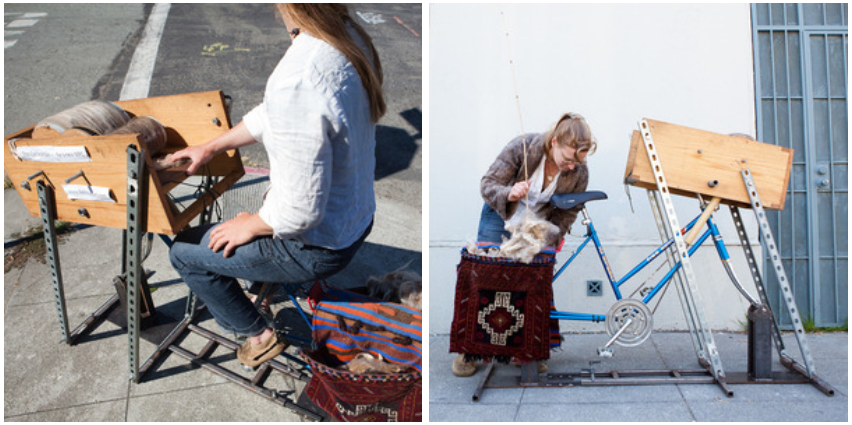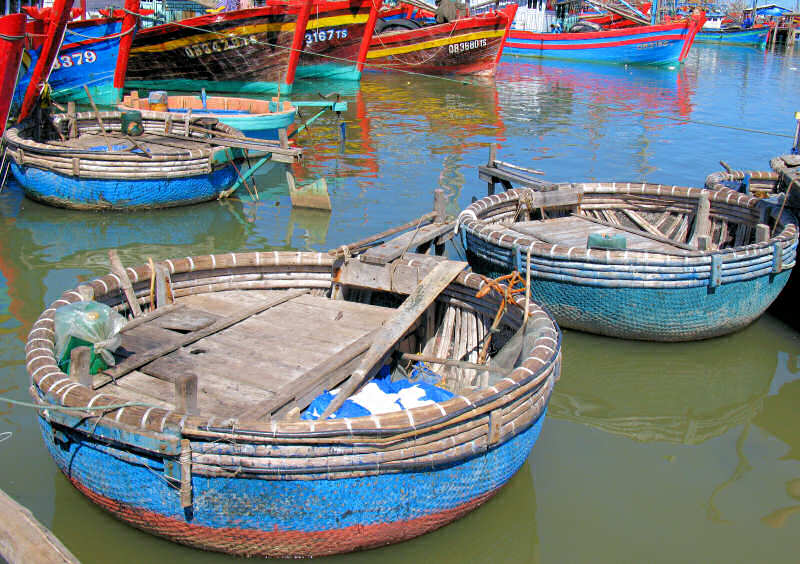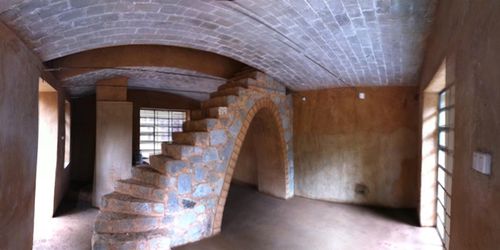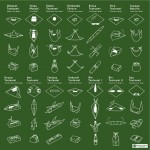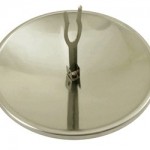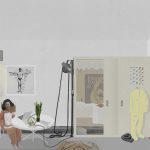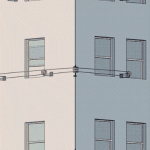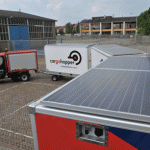The Cyclocarder by Fibershed-contributor Katharina Jolda is a wonderful update to the article on pedal powered machines. The Cyclocarder can turn your backyard, community center, or farm into a human powered wool processing station.
Pedal Powered Wool Carding Machine
California Coolers
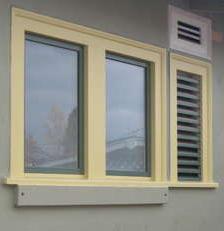 “Coastal Northern California is blessed with a very moderate climate, generally on the cool side, especially at night. Before the refrigerator became common in households, denizens of this region took advantage of the cool weather by storing perishable foods in a special kitchen cabinet that brought in air from the outside – the California Cooler.
“Coastal Northern California is blessed with a very moderate climate, generally on the cool side, especially at night. Before the refrigerator became common in households, denizens of this region took advantage of the cool weather by storing perishable foods in a special kitchen cabinet that brought in air from the outside – the California Cooler.
The cooler cabinets were designed to hold fruits, vegetables, and other staples that needed to be kept cool but didn’t need to take up critical space in the era’s tiny ice boxes. The coolers were open to the basement to draw in cool air, which then wafted up and out a chimney or a wall vent.
When the refrigerator came along, it seems that, over time, the vents were boarded up and the California Cooler was all but forgotten. Today, if you walk the streets of my hometown, Berkeley, where most of the houses were built in the 1920’s, you will see many homes, and even apartment buildings, with the exterior vestiges of these vents.”
Read more: Resurrecting the California Cooler. Thank you, Adriana. Previously: Saving food from the fridge.
The Wooden Work Boats of Indochina
“The wooden work boats of Vietnam, Cambodia and Laos (French Indochina) have a long and fascinating history of sail and trade in South East Asia and beyond. Today, the sails are nearly all gone but the boats and their builders survived by adapting the traditional sailboat hulls for motoring. Our goal is to document the building, design and uses of as many traditional and unique wooden work boats of Southeast Asia as possible before the master craftsmen who build them are gone.”
Great pictures at Boats and Rice. Via Duckworks Magazine. Previously: The Junk Blue Book. More boats.
Parabolic Basket and Tin Can Solar Cooker
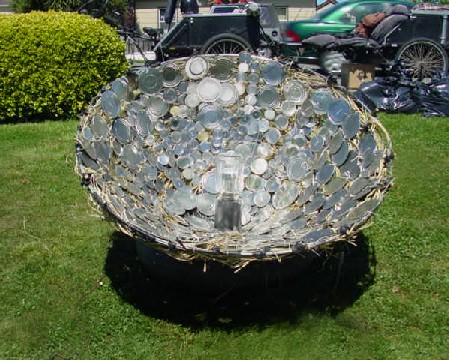 “The objective of this project is to create a solar cooker out of local invasive species and waste materials. We want to create a device that can pasteurize water and be an alternative to the use of fossil fuels for cooking food.”
“The objective of this project is to create a solar cooker out of local invasive species and waste materials. We want to create a device that can pasteurize water and be an alternative to the use of fossil fuels for cooking food.”
“The structure of the parabolic solar cooker will be made from the canes, or stems, of the locally invasive Himalaya blackberry. Canes will be harvested and dethorned so they can be woven into a parabolic basket shape. The Himalaya blackberry canes form parabolic curves, so when they dry and stiffen they will maintain the sturdy parabolic shape of the basket.”
“To give the parabolic cooker its necessary reflective surface, we gathered around 300 tin can lids to line the inside of the basket. We punched holes in the can lids so we could string them together in lines of 8-10 lids each. Then we tied these lengths of can lids to the basket using either hemp twine or twist ties. Since there were still many spaces on the basket uncovered by can lids, we gathered a bunch of large can lids and attached those individually to the basket.”
Read more: Parabolic basket and tin can solar cooker. More DIY-posts. Previously: The bright future of solar powered factories.
The Best Invention Since The Wheel
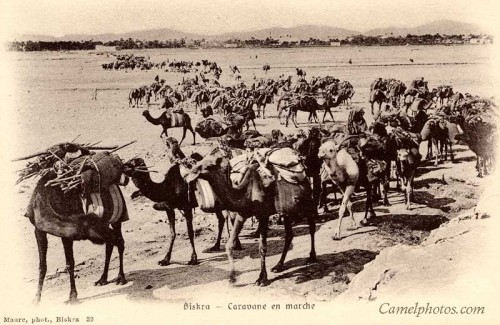 “Between the third and seventh centuries AD, the civilizations of the Near East and North Africa gave up wheeled vehicular transportation and adopted a more efficient and speedier way of moving goods and people: They replaced the wagon and cart with the camel. This deliberate rejection of the wheel in the very region of its invention lasted for more than one thousand years. It came to an end only when major European powers, advancing their imperialistic schemes for the Near East, reintroduced the wheel.”
“Between the third and seventh centuries AD, the civilizations of the Near East and North Africa gave up wheeled vehicular transportation and adopted a more efficient and speedier way of moving goods and people: They replaced the wagon and cart with the camel. This deliberate rejection of the wheel in the very region of its invention lasted for more than one thousand years. It came to an end only when major European powers, advancing their imperialistic schemes for the Near East, reintroduced the wheel.”
“The camel as a pack animal was favored over wheeled transportation for reasons that become obvious when the camel is compared with the typical ox-drawn vehicle. The camel can carry more, move faster, and travel farther, on less food and water, than an ox. Pack animals need neither roads nor bridges, they can traverse rough ground and ford rivers and streams, and their full strength is devoted to carrying a load and not wasted on dragging a wagon’s deadweight. Once the camel and ox are compared, one wonders why the wheel was ever adopted in that region in the first place.”
“A large share of the burden of goods in the Near East was always carried by pack animals. A bias for the wheel led Western scholars to underrate the utility of pack animals and overemphasize the contribution made by wheeled vehicles in the years before the camel replaced the wheel. The more we learn about the wheel, the clearer it becomes that its history and influence have been distorted by the extraordinary attention paid to it in Europe and the United States. The Western judgment that the wheel is a universal need (as crucial to life as fire) is of recent origin.”
Quoted from: “The Evolution of Technology“, George Basalla, 1988. See also: “The Camel and the Wheel“, Richard W. Bulliet, 1990 (summary). Previously: Camel trains in Asia, Russia and Australia.
The Sustainable Urban Dwelling Unit (SUDU)
The ‘Sustainable Urban Dwelling Unit’ (SUDU) in Ethiopia demonstrates that it is possible to construct multi-story buildings using only soil and stone. By combining timbrel vaults and compressed earth blocks, there is no need for steel, reinforced concrete or even wood to support floors, ceilings and roofs. The SUDU could be a game-changer for African cities, where population grows fast and building materials are scarce.
